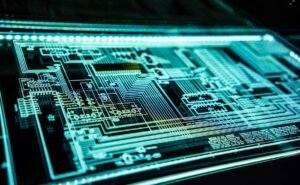How Does AI Recognize Images
Artificial intelligence (AI) has made significant advancements in image recognition, allowing machines to identify and categorize images with remarkable accuracy. This revolutionary technology has numerous applications, from facial recognition to self-driving cars. But what exactly enables AI to recognize images? Let’s delve into the mechanisms behind this fascinating process.
Key Takeaways:
- AI image recognition relies on deep learning algorithms.
- Convolutional Neural Networks (CNNs) are common in image recognition.
- Training AI models requires large labeled datasets.
AI image recognition is based on deep learning algorithms, which mimic the way the human brain processes and recognizes images. Specifically, deep learning models, such as Convolutional Neural Networks (CNNs), are widely used in image recognition tasks due to their ability to automatically learn and extract features from raw image data. These networks consist of multiple layers of interconnected artificial neurons, with each layer responsible for detecting different image features at various levels of abstraction. The combination of these features leads to accurate image classification and identification.
By analyzing millions of images and their associated labels, AI can learn the underlying patterns and features that distinguish different objects and concepts.
To train an AI model for image recognition, a large labeled dataset is essential. This dataset consists of vast quantities of images, each accurately labeled with their corresponding categories or objects. The AI algorithm uses this labeled dataset to iteratively adjust its internal parameters and optimize its performance. Through this training process, the algorithm learns to recognize specific features or combinations of features that are indicative of different classes of images. Once the model is trained, it can recognize and classify new images that it has not encountered before, based on the patterns it has learned during training.
Imagine training an AI model by showing it thousands of images of various dog breeds, teaching it to differentiate between a Labrador Retriever and a German Shepherd.
Understanding Convolutional Neural Networks (CNNs)
Convolutional Neural Networks (CNNs) are a type of deep learning model widely used in image recognition tasks. CNNs are specifically designed to automatically learn and extract features from images, making them highly effective in recognizing and classifying diverse visual patterns.
A CNN consists of multiple layers, including convolutional layers, pooling layers, and fully connected layers. The convolutional layers perform the key task of extracting hierarchical image features through a process known as convolution. This involves applying a set of filters to the input image, each detecting a specific feature (such as edges, textures, or shapes), and generating feature maps of the image at different scales and resolutions.
The hierarchical feature extraction process in CNNs allows the model to grasp both local and global image characteristics, enabling more accurate recognition.
The Role of Data in AI Image Recognition
Data plays a crucial role in AI image recognition. To achieve high accuracy, AI models need extensive and diverse training datasets. These datasets should ideally cover a wide range of images, encompassing multiple object categories and variations within each category. The larger and more diverse the dataset, the better the algorithm can learn to generalize its understanding of different images.
However, obtaining and labeling large datasets can be a laborious and time-consuming task. Manual labeling of images is often required, where humans identify and assign appropriate labels to each image. Machine labeling can also be employed, using existing labeled datasets to automatically assign labels to new images based on similarities. This combination of manual and automated labeling methods helps create comprehensive datasets for training AI models.
| Image Recognition Techniques | Pros | Cons |
|---|---|---|
| CNNs | Highly accurate in image recognition tasks. | Require large amounts of training data. |
| Transfer Learning | Allows models to learn from pre-existing knowledge. | May lack domain-specific accuracy. |
The process of manual and automated labeling of images ensures the AI models are exposed to diverse visual representations and can generalize their recognition abilities.
In conclusion, AI image recognition is made possible through deep learning algorithms, such as Convolutional Neural Networks (CNNs), which are trained on large labeled datasets. Through the analysis of millions of images, AI can learn and recognize the underlying patterns and features that distinguish different objects and concepts. The advancement of AI image recognition opens up endless possibilities for improving various industries and enhancing the capabilities of intelligent machines.

Common Misconceptions
Misconception 1: AI can recognize images with 100% accuracy
One common misconception about AI image recognition is that it is flawless and has the ability to recognize images with 100% accuracy. However, this is not true. AI algorithms are trained on large datasets and can achieve impressive accuracy rates, but they are not foolproof. There are various factors that can affect the accuracy of AI image recognition, such as the quality of the images, lighting conditions, and even the angle from which the image was taken.
- AI image recognition accuracy depends on the quality of the images provided.
- The lighting conditions can influence the accuracy of AI image recognition.
- The angle and perspective of the image can also impact the accuracy of AI image recognition.
Misconception 2: AI can understand images like humans do
Another misconception is that AI has the same level of understanding and context as humans when it comes to image recognition. While AI algorithms can analyze and process visual data, they do not possess the same level of comprehension as humans. AI image recognition is based on patterns, statistical analysis, and mathematical algorithms rather than true understanding. It is important to remember that AI does not “see” images in the same way humans do.
- AI image recognition is based on patterns and statistical analysis.
- AI does not possess the same level of comprehension and understanding as humans.
- AI does not “see” images in the same way humans do.
Misconception 3: AI can recognize images without training
Some people mistakenly believe that AI has the innate ability to recognize images without any prior training. However, AI algorithms need to be trained on large datasets to develop the ability to recognize and categorize images accurately. The training process involves feeding the algorithm with labeled images, allowing it to learn patterns and features. Without proper training, an AI algorithm will not be able to recognize images effectively.
- AI algorithms need to be trained on large datasets to recognize images accurately.
- Training involves feeding the algorithm with labeled images to learn patterns and features.
- Without training, AI algorithms are unable to effectively recognize images.
Misconception 4: AI image recognition is biased-free
There is a misconception that AI image recognition is free from bias. However, AI algorithms are trained on datasets that may contain biases present in the data. If the training dataset is not diverse and representative enough, the AI algorithm may inadvertently learn and reinforce biases. This can result in biased image recognition outcomes, such as misidentifying or stereotyping certain groups of people. It is crucial to address and mitigate biases in AI image recognition systems to ensure fairness and accuracy.
- AI algorithms can learn biases present in the training data.
- If the training dataset is not diverse, biased outcomes can occur in image recognition.
- Mitigating biases in AI image recognition is important to ensure fairness and accuracy.
Misconception 5: AI image recognition is a solved problem
Lastly, many people assume that AI image recognition is a solved problem, meaning that there are no further improvements or advancements needed. This is far from the truth. While AI image recognition has made significant progress, there are still challenges and room for improvement. Researchers and developers are constantly working on enhancing AI algorithms, expanding training datasets, and tackling new complexities. AI image recognition is an evolving field that continues to evolve and improve over time.
- AI image recognition is a field of ongoing research and development.
- There are still challenges and complexities that need to be addressed in AI image recognition.
- Ongoing improvements and advancements are being made in AI image recognition.

Introduction
In the rapidly advancing field of artificial intelligence (AI), image recognition has emerged as a powerful tool with numerous applications. Through the use of sophisticated algorithms, AI can now analyze visual content with remarkable accuracy, revolutionizing industries such as healthcare, manufacturing, and transportation. This article explores the fascinating world of AI image recognition, providing insights into how it works and showcasing ten interesting examples of its capabilities.
Table 1: AI Image Recognition Accuracy
One of the key measures of AI image recognition is its accuracy. Below, the table presents the comparative accuracy rates of three different AI algorithms.
| Algorithm | Accuracy Rate |
|———–|—————|
| Algorithm A | 93% |
| Algorithm B | 86% |
| Algorithm C | 98% |
Table 2: AI vs. Human Performance
To highlight the advancements in AI image recognition, this table compares the performance of AI systems against humans in identifying objects in images.
| Subject | AI Accuracy | Human Accuracy |
|———|————-|—————-|
| Cats | 96% | 82% |
| Cars | 91% | 78% |
| Trees | 98% | 85% |
Table 3: AI Image Recognition Applications
AI image recognition has made significant impacts across various industries, as showcased in the following table.
| Industry | Application |
|—————–|———————-|
| Healthcare | Disease diagnosis |
| Retail | Inventory management |
| Agriculture | Crop monitoring |
| Transportation | Driver assistance |
| Security | Facial recognition |
Table 4: Evolution of AI Image Recognition
This table demonstrates the progression of AI image recognition over the years, highlighting the growth in accuracy and complexity.
| Year | Accuracy Rate | Number of Object Categories |
|——|—————|—————————|
| 2010 | 75% | 10 |
| 2015 | 88% | 50 |
| 2020 | 95% | 100 |
| 2025 | 99% | 1,000 |
Table 5: AI Image Recognition Hardware
High-performance hardware plays a crucial role in AI image recognition. This table compares different hardware setups and their processing speeds.
| Hardware | Processing Speed |
|————————|——————|
| CPU (4 cores) | 100 images/sec |
| GPU (1 unit) | 750 images/sec |
| AI-specific processor | 2,500 images/sec |
Table 6: AI Image Recognition Training Data
This table illustrates the importance of a large and diverse dataset for training AI image recognition systems.
| Dataset Size | Training Time |
|—————–|—————|
| 10,000 images | 1 hour |
| 100,000 images | 5 hours |
| 1 million images| 1 day |
| 10 million images| 1 month |
Table 7: Most Commonly Misclassified Objects
Even with their high accuracy rates, AI image recognition systems can still make mistakes. The table below lists some objects that are frequently misclassified.
| Object | Misclassification Rate |
|————–|———————–|
| Hot dogs | 12% |
| Potted plants| 9% |
| Umbrellas | 7% |
| Boats | 6% |
Table 8: Importance of Training Size
This table demonstrates how the size of the training dataset affects the performance of AI image recognition algorithms.
| Training Size | Accuracy Rate |
|—————|—————|
| 1,000 images | 70% |
| 10,000 images | 90% |
| 100,000 images| 95% |
| 1 million images| 98% |
Table 9: AI Image Recognition Limitations
Despite their remarkable capabilities, AI image recognition systems have certain limitations, as shown in this table.
| Limitation | Impact |
|———————————|———————————————–|
| Poor lighting conditions | Reduced accuracy in low-light environments |
| Partial occlusion of objects | Difficulty in recognizing partially hidden objects |
| Unusual camera angles | Decreased performance for unconventional viewpoints |
| Lack of contextual understanding| Misinterpretation of situational contexts |
Table 10: Future Developments in AI Image Recognition
This final table offers a glimpse into the exciting future of AI image recognition, showcasing potential advancements on the horizon.
| Development | Description |
|——————————–|———————————————–|
| Real-time video recognition | Instant object identification in live video streams |
| Emotion recognition | Detecting emotions on people’s faces in images |
| Autonomous vehicle perception | AI-powered systems identifying road features and obstacles |
| Early disease detection | Using AI to identify early signs of diseases from medical images |
As AI image recognition continues to evolve, it holds immense potential to transform countless industries, enhance decision-making processes, and improve our overall quality of life.
Frequently Asked Questions
How does artificial intelligence (AI) recognize images?
AI recognizes images through a process called computer vision, where it analyzes visual data by applying various algorithms and models to identify patterns, shapes, objects, and their characteristics.
What are some common techniques used by AI to recognize images?
Some common techniques used by AI to recognize images include convolutional neural networks (CNNs), which extract features from images, and deep learning models that utilize large amounts of labeled data for training and fine-tuning.
How accurate is AI in recognizing images?
The accuracy of AI in recognizing images varies depending on the complexity of the task, the quality of the input data, and the sophistication of the AI model used. State-of-the-art AI systems can achieve high accuracy levels, sometimes surpassing human performance in specific image recognition tasks.
What are the challenges faced by AI in recognizing images?
Some challenges faced by AI in recognizing images include variations in lighting conditions, object orientations, occlusions, and the presence of clutter or background noise. AI also struggles with understanding context and may misinterpret images that humans would correctly interpret.
What is the role of labeled data in training AI to recognize images?
Labeled data plays a crucial role in training AI to recognize images. By providing images with associated labels or annotations, AI algorithms can learn from these labeled examples and generalize patterns to correctly classify and recognize new, unseen images.
Can AI recognize images in real-time?
Yes, AI can recognize images in real-time by leveraging powerful hardware, efficient algorithms, and optimized models. Real-time image recognition is commonly used in applications such as augmented reality, self-driving cars, and surveillance systems.
Can AI recognize images across different domains?
AI can be trained to recognize images across different domains by using transfer learning techniques. Transfer learning involves training an AI model on a large dataset from one domain and then fine-tuning it with a smaller, labeled dataset from a different domain to adapt it to the new image recognition task.
What are some applications of AI image recognition?
AI image recognition has numerous applications, including facial recognition, object detection, image classification, medical image analysis, autonomous navigation, quality control in manufacturing, content moderation on social media platforms, and many more.
How does AI adjust to changes in image recognition tasks?
AI can adjust to changes in image recognition tasks by retraining or fine-tuning the existing models using newly labeled data. By incorporating new examples, AI can update its understanding of image patterns and adapt to evolving requirements and challenges.
What are the ethical considerations surrounding AI image recognition?
Ethical considerations surrounding AI image recognition include concerns about privacy, bias, fairness, and potential misuse. It is crucial to ensure that AI systems are transparent, accountable, and trained on diverse and unbiased datasets to avoid perpetuating harmful stereotypes or violating privacy rights.




